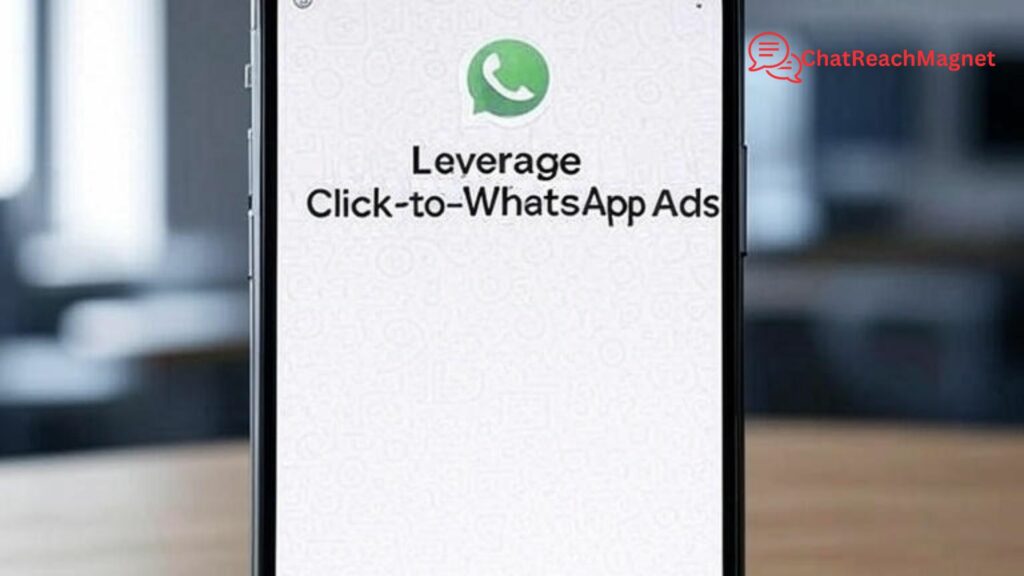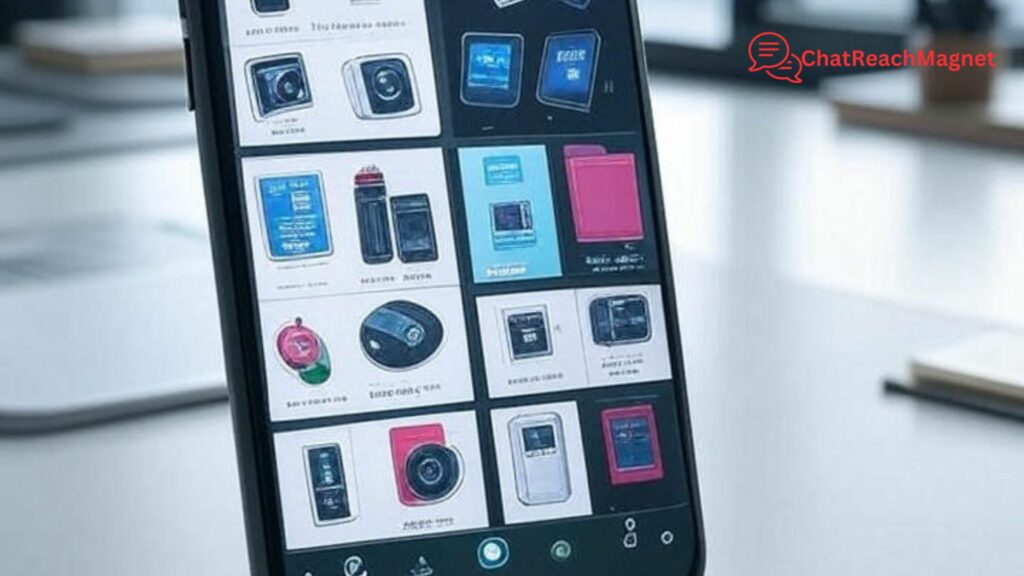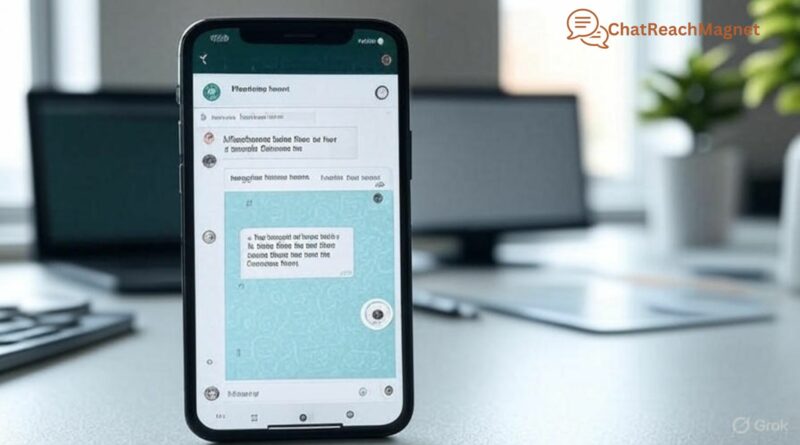WhatsApp Conversational Commerce: Explore 7 Strategies to Boost Sales for Your Business in 2025
The shopping experience has changed forever. Customers today are not satisfied with cold websites, lengthy checkout processes, or impersonal emails.
They want brands to talk to them, answer their questions instantly, and guide them through every step of their buying journey.
This growing expectation has led to the rise of conversational commerce, the art of selling through meaningful conversations on messaging platforms.
Among all platforms, WhatsApp reigns supreme in 2025. With more than 2.7 billion global users and powerful business features, WhatsApp has become the ultimate space where conversations translate into conversions.
For businesses, the opportunity is massive. Conversational commerce is projected to fuel billions of dollars in global sales, and WhatsApp is at the centre of this transformation. If you are not leveraging it yet, you risk being left behind.
In this detailed guide, we will explore seven proven WhatsApp conversational commerce strategies that can help you boost sales, delight customers, and secure your place in the digital marketplace of 2025.
What Exactly is Conversational Commerce?
Conversational commerce is the use of chat applications, voice assistants, and messaging platforms to interact with customers, showcase products, answer questions, and complete transactions.
Instead of forcing customers to visit a website or physical shop, businesses meet them where they already are—inside chat apps.
On WhatsApp, this means:
- Sending a product catalogue to a curious shopper.
- Using a chatbot to recommend the right item.
- Processing payments instantly within the chat.
- Providing after-sales support in the same conversation.
It removes friction from the buying journey, making it as simple as talking to a friend.
Why WhatsApp is the Heart of Conversational Commerce in 2025
There are many messaging platforms, but WhatsApp’s dominance in conversational commerce is unmatched. Here is why:
- Global Reach – Over 2.7 billion users across 180+ countries.
- Engagement Rates – WhatsApp boasts a 98% open rate and significantly higher response rates compared to email.
- Trust Factor – End-to-end encryption assures customers of privacy and safety.
- Business Tools – From WhatsApp Business App to the Business API, brands can create catalogues, automate responses, and process payments.
- Behaviour Shift – Customers prefer chatting over filling forms or waiting on phone lines.
For businesses, WhatsApp is no longer a side tool—it is a direct revenue channel.
7 WhatsApp Conversational Commerce Strategies to Boost Sales
Now, let us explore the practical strategies you can adopt to thrive in 2025.
#1. Leverage Click-to-WhatsApp Ads

One of the fastest ways to initiate conversations is through Click-to-WhatsApp ads. These are advertisements on Facebook or Instagram that feature a “Message on WhatsApp” button. Instead of sending customers to a landing page, the ad opens a chat directly in WhatsApp.
Why it works:
- Reduces steps in the buying journey.
- Connects interested leads instantly.
- Personalises the first point of contact.
Example: A fashion brand runs an Instagram ad for a new collection. When a customer clicks the ad, they are taken to WhatsApp where a chatbot greets them with options to browse sizes, colours, or request a discount code.
Steps to implement:
- Create a Facebook or Instagram ad campaign.
- Select “Click to Message” and choose WhatsApp as the destination.
- Write compelling ad copy that encourages chat.
- Prepare automated greetings in WhatsApp Business API.
💡 Pro tip: Offer an exclusive discount for those who start a conversation through the ad.
#2. Showcase Products with WhatsApp Catalogues

The WhatsApp Business App and API allow you to create a product catalogue where customers can browse items directly in chat. This feature eliminates the need to redirect users to a website.
Why it works:
- Shopping feels natural and interactive.
- Customers can share products with friends.
- Increases product visibility without extra cost.
Example: A beauty brand creates a WhatsApp catalogue with skincare items, including descriptions, prices, and photos. A customer can select an item, add it to their cart, and check out—all inside WhatsApp.
Steps to implement:
- Open WhatsApp Business App.
- Go to “Business Tools” → “Catalogue”.
- Add product images, descriptions, and prices.
- Share the catalogue in chats or broadcast lists.
💡 Pro tip: Use high-quality images and update your catalogue frequently with new arrivals or limited-time offers.
#3. Automate Customer Interactions with AI-Powered Chatbots
Customers expect instant replies. A delay could mean losing a sale. With AI chatbots, you can respond to FAQs, recommend products, process orders, and track deliveries 24/7.
Why it works:
- Provides 24/7 availability.
- Reduces workload on human agents.
- Speeds up response times.
Example: An electronics store chatbot helps customers choose between two smartphone models, highlights features, and provides a link for payment—all without human intervention.
Steps to implement:
- Connect your WhatsApp Business API with a chatbot provider (e.g., Chatreachmagnet, Twilio, WATI, or Tidio).
- Train your bot with FAQs and product details.
- Set up automated flows for purchases, order tracking, and returns.
- Include an option to “talk to a human” for complex issues.
💡 Pro tip: Personalise chatbot replies by including customer names and previous purchase history.
#4. Enable WhatsApp Payments
The fewer steps in the checkout process, the higher the chances of conversion. With WhatsApp payments, customers can complete purchases instantly without leaving the app.
Why it works:
- Reduces cart abandonment.
- Simplifies the transaction process.
- Builds trust with instant receipts.
Example: A food delivery service allows customers to place an order through chat and pay instantly with WhatsApp Pay.
Steps to implement:
- Set up WhatsApp Pay for Business in supported regions.
- Integrate multiple payment methods (cards, wallets, UPI, etc.).
- Send automated invoices and receipts via chat.
💡 Pro tip: Offer cashback or rewards for payments completed directly in WhatsApp.
#5. Personalise Customer Interactions
Personalisation is the backbone of conversational commerce. Customers want to feel recognised and valued, not treated like just another number.
Why it works:
- Builds stronger relationships.
- Encourages repeat purchases.
- Increases loyalty and trust.
Example: A travel agency segments customers into adventure seekers, luxury travellers, and family vacationers. Each group receives tailored WhatsApp messages with trip packages suited to their interests.
Steps to implement:
- Segment customers based on demographics, behaviour, or purchase history.
- Use WhatsApp API integrations with CRM tools.
- Craft tailored offers for each group.
💡 Pro tip: Send personalised birthday wishes with discount codes—it makes customers feel valued.
#6. Engage Customers with Broadcast Lists and WhatsApp Newsletters
Broadcast lists allow you to send messages to multiple people at once, while WhatsApp’s new newsletter feature helps brands maintain regular communication with audiences.
Why it works:
- Keeps customers informed of new launches.
- Promotes flash sales instantly.
- Builds long-term brand engagement.
Example: A sportswear brand sends a weekly WhatsApp newsletter with fitness tips, workout videos, and product discounts.
Steps to implement:
- Collect opt-ins for WhatsApp communication.
- Create broadcast lists for loyal customers.
- Share valuable content beyond just promotions.
💡 Pro tip: Follow the 80/20 rule—80% value-driven content and 20% promotional.
#7. Provide Seamless Post-Purchase Support
The relationship should not end after a sale. Post-purchase support keeps customers loyal and encourages repeat sales.
Why it works:
- Builds customer trust and satisfaction.
- Reduces refunds and complaints.
- Turns customers into brand advocates.
Example: An online store sends order updates, delivery tracking, and easy return options through WhatsApp.
Steps to implement:
- Automate order status notifications.
- Provide instant refunds or exchanges via chat.
- Collect feedback after delivery.
💡 Pro tip: Use post-purchase conversations to upsell complementary products.
Benefits of Adopting WhatsApp Conversational Commerce
- Increased conversions – Customers buy faster when answers are instant.
- Reduced cart abandonment – Frictionless checkout keeps customers engaged.
- Cost-effective marketing – Lower ad spend compared to traditional channels.
- Improved loyalty – Personalised engagement fosters repeat purchases.
- Scalability – Automation allows handling thousands of customers at once.
Future Outlook: WhatsApp Conversational Commerce Beyond 2025
The next wave of WhatsApp commerce will include:
- Voice-enabled shopping – Customers will shop using voice commands.
- Augmented Reality (AR) – Trying products virtually in WhatsApp.
- Advanced AI recommendations – Bots suggesting products based on browsing history.
- Full CRM integration – Blending customer insights with conversations for smarter sales.
The businesses that act now will future-proof their sales strategies and secure a competitive edge.
Conclusion
WhatsApp conversational commerce is no longer optional—it is essential. In 2025, businesses that fail to adapt risk losing out on billions in potential sales.
The seven strategies outlined—Click-to-WhatsApp ads, catalogues, chatbots, payments, personalisation, newsletters, and post-purchase support—are proven methods to boost engagement, improve customer experience, and drive higher sales.If your goal is to stand out in an increasingly competitive digital market, start mastering WhatsApp conversational commerce today. Because in the new world of business, your next big sale is only one message away.

